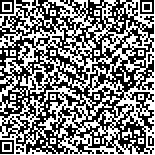下载中心
优秀审稿专家
优秀论文
相关链接
摘要

国产高分辨率光学卫星影像的无地面控制精准定位是实现境外大范围区域或大规模遥感应用和中小比例尺测图的前提。针对资源三号卫星(ZY-3)影像的几何特点,以航空摄影测量中约束问题最优化方法“交替趋近法”和基于RFM的最小二乘平差为基础,提出了一种易于并行化、高效的高分辨率光学卫星影像无控制联合区域网平差方法GISIBA(GCP-Independent Satellite Imagery Block Adjustment),通过构建“平均值”虚拟控制点来解决无控制区域网平差中的“秩亏”问题,便于分析无控制区域网平差结果与影像数据的覆盖次数及时相之间的关系。首先,交替趋近法被用来实现并行处理平台基础上的待平差未知数初值的解算、中等尺度以上粗差的自动检测与剔除,并根据计算结果赋予所有未知数一定的先验权值;然后,通过最小二乘法实现大型法方程矩阵的解算,获得满足高精度影像产品生产制作需求的高精度定向参数;最后,利用多组典型区域的ZY-3影像数据试验验证了该方法的精度和实际性能。结果表明,无控制区域网平差达到了优于6.0 m/5.0 m的平面/高程精度,所提方法为全球地理信息资源建设工程、国产光学卫星影像高精度影像产品生产提供了技术保障。
The spatial and radiation resolutions of domestic satellites have been remarkably improved in recent years. The sensor design and geometric calibration technologies have improved with the development and application of stereo mapping satellites (ZY-3). However, the imaging systems typically use the linear CCD imaging technology. The long focal length and narrow field angle causes the geometrical model to have 3D parallel projection characteristics, and the satellite images will still have residual system errors caused by the drift error of satellite-borne GPS/IMU and asynchrony between the pose and trace of the satellite, especially after the rigorous on-orbit geometry calibration. A block adjustment technique is still required to meet the requirements of remote sensing monitoring and mapping application. Therefore, satellite images-based accurate positioning without ground control point information is the precondition to obtain the global geographic and resource environmental information and monitoring changes in the global resource environment. The accuracy of "ZY-3" satellite image is improved to 15 m after calibration and its internal precision is better than 1 pixel. After the overall block adjustment without GCPs, the plane and elevation accuracy of the image can be improved to 5 m (medium error). In this study, on the basis of the widely used optimization method of solving the constraint problem in photogrammetry–alternating direction method (ADM) and RFM least-squares block adjustment, we propose a GCP-independent block adjustment method for large-scale domestic high-resolution optical satellite images–GCP-independent satellite imagery block adjustment (GISIBA) based on the geometric features of ZY-3 satellite images. The proposed method is highly efficient and easy to parallelize.
GISIBA of satellite images can be considered as the overall block adjustment of the multi-source optical satellite imagery with specific constraints (distance, angle, etc.) when no ground control points are available. Most GCP-independent adjustments use a form of virtual control points. However, the precision of these virtual control points is low (varied system error), and the precision is inconsistent in the measurement area. Thus, the GCP-independent adjustment is a type of block adjustment under different precision controls. The law of error propagation of this approach is complex, and gross error detection and positioning are difficult to perform using this approach. This study presents an "average" virtual control point-based stereoscopic GCP-independent block adjustment method for large-scale satellite image GISIBA. On the basis of the automatic and reliable acquisition of uniformly distributed image tie points, the method comprehensively uses the "ADM" introduced from aerial photogrammetry and RFM-based least squar汥潳挠歡?慪摵橳畴獭瑥浮整渠瑡?执祯?畩獴楨湭朠?瑯栠敲?癡楬物瑺略愠汴?≥愠癣敯牭慢杩敮≥?挠潢湬瑯牣潫氠?灤潪極湳瑴獭??呴栠敯?映楳湡慴汥?灬潩獴楥琠楩潭湡慧汥?愮挠捆畩牲慳捴礬?楴獨?猠琢牁潄湍朢攠物?琠桵慳湥?琠桴敯?睳潯牬獶瑥?楴湨楥琠楩慮汩?灩潡獬椠瑶楡潬湵楥湳朠?慦挠捴畨牥愠捵祮?潮景?瑮桳攠?潮牤椠杴楯渠慰汥?楦浯慲杭攠???畯牭瑡桴敩牣洠潤牥整??瑴桩敯?椠湡据牤攠慥獬敩?潩湮?瑴桩敯?挠潯癦攠牴慨来攠?潢景?獥愠瑭敥汤汩極瑭攭?楣浡慬来攠獧?摯潳敳猠?湲潲瑯?挠潢湡獳楥獤琠敯湮琠汴票?椠浰灡牲潡癬敬?瑬栠数?潯癣敥牳慳汩汮?瀠潰獬楡瑴楦潯湲業渮朠?慬捬挠畵牮慫据祯???漠睡敲癥攠牡??瑩桧敮?畤猠数?潩景?捩漠湷獥楩摧敨牴慳戠汢敡?桥楤朠桯?爠整獨潥氠畲瑥楳潵湬?獳愮琠敎汥汸楴琬攠?楨浥愠杒敆獍?瑢潡?捥潤瘠敬牥?瑳桴攠?獱慵浡敲?愠牭敥慴?楯浤瀠物潳瘠敵獳?瑤栠整?瀠潳獯楬瑶楥漠湴楨湥朠?慡捲捧略爭慳捣祡?慥映瑲敥牦?瑲桭敡?晩楯湮愠汮?扲汭潡捬欠?慱摵橡畴獩瑯浮攠湴瑯?楯湢?瑡桩敮?獴瑨慥琠楯獲瑩楥据慴污?獩敯湮猠数??呡桭敥?桥潲牳椠穷潩湴瑨愠汨?慧湨搭?癲敥牣瑩楳捩慯汮?愠捷捨畩牣慨挠業敥獥?潳映?浨略氠瑰楲?捤潵癣整物敯摮?慲湥摱?浩畲汥瑭楥?瑴攠浯灦漠牨慩汧?猭慰瑲敥汣汩楳瑩敯?椠浩慭条敧獥?慰牲敯?杵牣整慳琮攠牂?瑯档慫渠???浵?慴湭摥???浢??牣敯獮灳整捲瑵楣癴敩汮祧?????呵桡敬?洢潡獶慥楲捡?灥爢漠扣汯敮浴?潯晬?慰摯橩慮捴敳渠瑡?慤牲敥慳獳?楳渠?汨慥爠朢敲?慮牫攢愠??佯??灥牭潳搠畩据琠楴潨湥?捇慃湐?扩敮?獥潰汥癮敤摥?睴栠敡湤?瑵桳楴牭摥?灴愠牡瑮祤?杩敭潰杲牯慶灥桳椠捴?楥渠晳潴牡浴慥琠楯潦渠?摯慲瑭慡?愠牥敱?楡湴瑩牯潮搠畯捦攠摴?慥猠?桬潯牣楫稠潡湤瑪慵汳?慭湥摮?瘠敳特瑳楴捥慭氬?捷潨湩獣瑨爠慢楥湮瑥獦??味栠楴獨?愠灳灴牡潢慩捬桩?楹猠?据潤渠獦楡摳整爠散摯?慶獥?睧敥慮正?猠敯湦猠整?慥甠硢楬汯楣慫爮礠?捯潲湥瑯牶潥汲?椠湴?瑥栠敭?扴汨潯捤欠?慡摫橥畳猠瑩浴攠湣瑯?灶牥潮捩敥獮獴?to analyze the relationship among the data coverage, imaging time interval, and satellite image GCP-independent block adjustment. In addition, parallel processing based on the OMP parallel method is used to realize the parallel processing of the "ADM" and multi-thread parallel computing based on least-squares adjustment to ensure the efficiency of block adjustment.
We used multiple sets of the ZY-3 satellite image data in typical regions to verify our method. The following experiment results are summarized as follows: 1) On the basis of the widely used optimization method of constraint problem called the "ADM" and RFM least-squares block adjustment, the proposed GISIBA method is easy to parallelize and is highly efficient in terms of reliability, accuracy, and performance of the developed procedure. 2) In this method, virtual "average" control points are built to solve the rank defect problem and qualitative and quantitative analyses in block adjustment without control. Assuming the positioning accuracy is located on the same number order (such as 50 m), the final positioning accuracy of satellite image must be improved after GCP-independent b???????????????????????????????????????????????????????????????????????????????????????????????????????????????????????????????????????????????????????????????????????????????????????????????????????????????????????????????????????????????????????????????????????????????????????????????????????????????????????????????????????????????????????????????????????????????????????????????????????????????????????????????????????????????????????????????????????????????????????????????????????????????????????????????????????????????????????????????????????????????????????????????????????????????????????????????????????????????????????????????????????????????????????????????????????????????????????????????????????????????????????????????????????????????????????????????????????????????????????????????????????????????????????????????????????????????????????????????????????????????????????????

